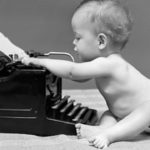STUDY TIP #2
 Let’s compare two of my students (whose names have obviously been falsified): Absorbed and Erratic.
Let’s compare two of my students (whose names have obviously been falsified): Absorbed and Erratic.
Absorbed can focus on anything. She concentrates on one task at a time, stays on target, and can tune our all distractions. If you try to interrupt her while she is reading, she won’t hear you. You have to tap the book or paper in front of her to break the trance. Absorbed does well but finds it difficult to switch tasks, and multitasking is out of the question.
Erratic has ADHD and can focus on anything she likes. If she finds it interesting, we can stay on task. If a job isn’t interesting to her, she can’t concentrate on it for more than 5 minutes, 10 if she’s having a good day.
Ideally, we would be like to combine the characteristics of Absorbed and Erratic. It would be great to be able to focus on anything we chose but still stay in touch with what’s going on around us. We want both channel switching and dedicated effort. In reality, we rarely achieve this balance.
Why Switch
Everything we learn must fit in with what we already know. We don’t start out without any knowledge, so any additional information must be added to our existing knowledge.
Think of knowledge as being structures, like Lego or Tetris. We already have certain shapes in place. To add more information, we have to fit it to what we already have or alter what we have so the new stuff can come in.
How It Works
We come to every situation with prior knowledge. Nothing is learned in a vacuum.
If we can, we fit new information into the existing context. This it quick, takes the least amount of effort, and is highly efficient.
But it is limited. As we add more and more information, things get confusing. There are limits to our ability to assimilate new things. It is like having a single box or drawer for everything.
As we grow up, this “junk-drawer” approach to learning is augmented by with a categorization process. Instead of being stuck with one box, we can sort things into multiple containers.
Switching tasks allows us to categorize what we’re learning. We wrap information into little bundles when we spend time on chemistry, then history, then language and back to chemistry. The brain likes it when things are easy to categorize.